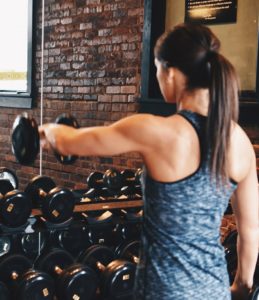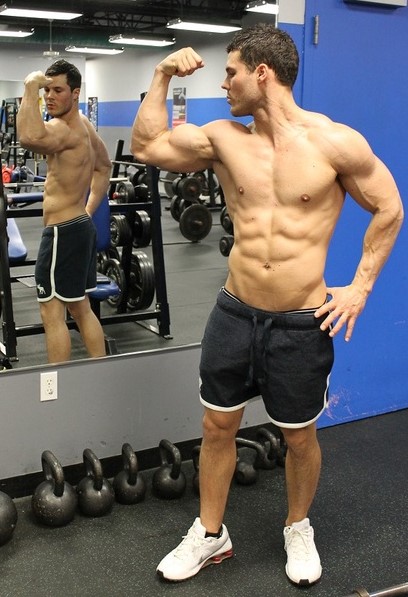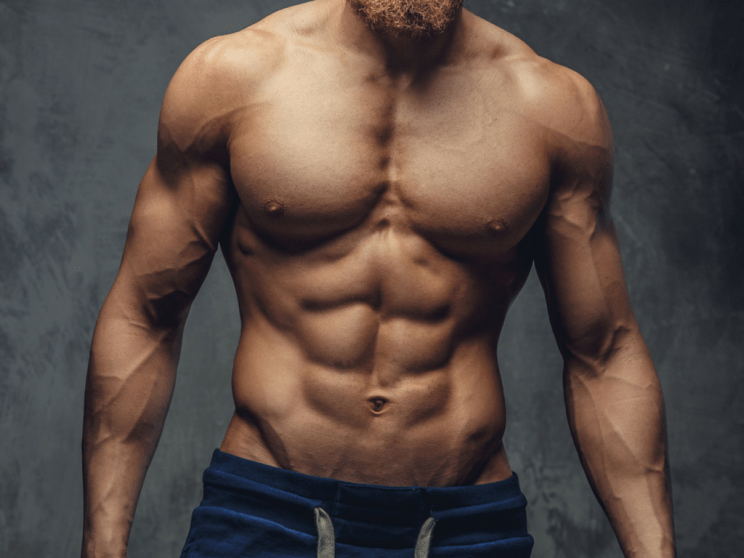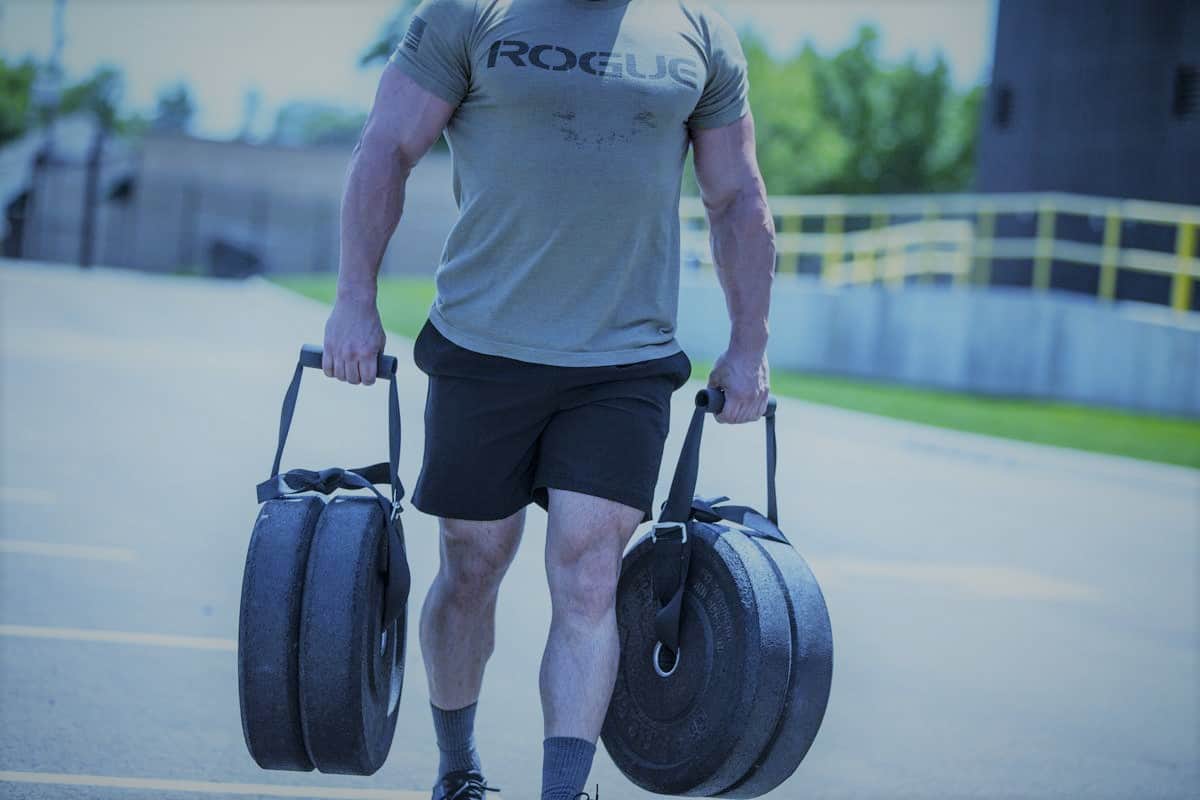No one’s ever regretted having nice, broad shoulders. You could say ladies don’t dig guys who are too shredded, or who look like they’re half-ox half-human, or who have lower halves so thick they can’t fit in most seats. But with a little powerbuilding, broad shoulders are an all-time plus in any physique. Regardless of what the rest of your body looks like, powerful, and wide shoulders are instant signifiers of upper body strength and they help pronounce a more confident posture.
Now, I know what you’re thinking. “But why should I give a shit about that? I’m a powerlifter with a long-term partner and looking good is secondary to being strong.” You’re right to think that, but big shoulders are strong shoulders. Bodybuilders know that, weightlifters know that, and powerlifters know it too. There’s more to good programming than the Big Three, and that’s going to be crucial if you want a better bench.
If you’re new to powerlifting, then setting your style of training apart from 90% of the gym population might still be important to you. You learn to worship the Big Three and forget that your body is made to do more than squat, bench, and deadlift. You might even scoff at bros using machines and dumbbells. But these are useful tools, if you know what to use them for.
Elite powerlifters don’t get to where they are by sticking to three exercises, but they do get to where they are through smart, informed training, anally-retentive programming, and extreme dedication. Part of that means building strong, healthy, and large shoulders.
What is Powerbuilding?
Powerbuilding is just a word I’ve seen used to describe a training style that, really, is just powerlifting without the strange notion that you only need to do three lifts to get big. It’s true that as a novice, your program should focus almost entirely on the big compound lifts, so you learn how to do them. Then, as you move on towards an intermediate and advanced level, your volume in the big three bumps up again as you try to get as efficient in each lift as humanly possible.
But somewhere in between is the intermediate phase, where you’re competent enough to perform a bench, squat, and deadlift with good form, but are still too inexperienced to put up respectable numbers. Part of that comes from form inefficiency, but a lot of it comes from a lack of strength and size.
Yes, we’re not training to be bodybuilders. But you can only go so far with a limited amount of muscle fiber, and it’s important to know that any powerlifter is going to train not only in rep ranges of 3-5, but 8-10 as well. Training for hypertrophy as well as training for strength lets you pack on more muscle, and then train that muscle to become more efficient at lifting heavy weights.
Picking a Program
 I recommend adopting a powerbuilding program as a way to pack on muscle and gain strength early on. As you become more experienced, you can separate these two aims and periodize, training for size, and strength as you approach a meet.
I recommend adopting a powerbuilding program as a way to pack on muscle and gain strength early on. As you become more experienced, you can separate these two aims and periodize, training for size, and strength as you approach a meet.
Linear programming is easier and simpler for intermediate lifters, because there’s less of a headache involved in organizing and keeping track of your progress through the program – and it’ll get you the best results as you make your way to the next level.
This is very important at the intermediate stage. Chances are you haven’t packed on the perfect amount of muscle yet. Your frame is either carrying too much fat, or not enough meat. Building to the right bodyweight and fat percentage takes years, but over the course of those years, you have to do more to stimulate muscle growth than stick to your compound lifts.
That doesn’t mean doing only a few accessories, either. While a heavy sumo pull can tax the quads and help them grow for better squats, there are muscle groups that are indirectly but critically involved in your lifts that won’t grow through simple variations.
The shoulders, for example, play a crucial role during the bench press, but most intermediate lifters fail to properly train each deltoid head and build strength throughout the whole shoulder complex, and not just the anterior delts.
Powerbuilding Isn’t Just for Size
I mention size and attractive shoulders, but the reality is that adopting a powerbuilding program when you’re an aspiring powerlifter is primarily to help you work through imbalances.
Powerlifting is not a perfect sport, and as with any athletic discipline, you’ll build some muscles far more than others. Your quads, erectors, hamstrings, glutes and chest are far more likely to be huge and strong than your calves, medial deltoids, abdominal wall and bicep. In some cases, this can lead to severe issues over time as muscles develop separately.
Frequent squatting and deadlifting should build your quads and hamstrings up equally, but depending on your leverages and lifting technique, you may still be lagging in one or the other, which can lead to knee pain as the agonist muscle pulls harder than the antagonist.
Heavy pressing without enough rowing will also lead to shoulder issues and back pain. It doesn’t matter how often you do pullups, you’ll have to throw in rear delt isolation and horizontal pulls if you want a healthier back, protected spine, and strong shoulders.
This isn’t to say that you’re going to get injured if you don’t incorporate bodybuilding training into your program. It’s to say that you’re at a higher risk of developing a muscular imbalance that can lead to injury.
Powerlifing and Injuries
As a whole, powerlifting is a relatively low-injury sport, lower even than weightlifting, and much lower than contact sports like MMA, boxing, American football, or hockey. I’m not here to fear-monger about torn rotator cuffs and incessant shoulder pain.
But I am here to help intermediate lifters avoid some of the aches I experienced and avoid the injuries that many other lifters have had to work through. Adding deltoid accessories and rotator cuff workouts (for minor muscles like the subscapularis, infraspinatus, supraspinatus, and teres minor) to your training program will eat up a minimal amount of your training time, improve your shoulder physique, and lead to smoother, pain-free pressing.
Another thing to note is that powerlifters experience more shoulder injuries than weightlifters. This might be a surprise to you, because weightlifters snatch and jerk enormous weights, while powerlifters do little more than bench on competition day.
But the reality is that the bench press is awkward on the shoulders, and not considering the importance of strong shoulders can lead to an injury by way of improper pressing form, weak scapular contraction, or sheer pressure on the shoulder by way of the fact that you’re pressing more weight than you might normally snatch.
My theory, obviously unproven, is that weightlifters are prepared for the snatch through hours and hours of strenuous shoulder work, which helps mitigate the risk of putting so much pressure on the shoulder joint during the bottom and top of a snatch. However, sub-elite powerlifters may be pushing their bench training while their shoulders and back are lagging.
In other words, weightlifters are already powerbuilding their shoulders by necessity.
By powerbuilding stronger shoulders, you can protect yourself from injury and make shoulder problems much less likely. If you have a desk job, it’s doubly important to build stronger shoulders and work on horizontal pulling power. This is to counteract the common posture mistake of rounding the shoulders while sitting at a desk.
Example Exercises
-
Shoulder Prehab
- Banded Pull-Apart
- Face Pull
- Banded Shoulder Rotation
- Skin-The-Cat/German Hold
- Seated Shoulder Stretches
-
Pressing Power
- Strict Press
- Dumbbell Press
- Snatch Press
- Behind-the-Neck Press
-
Shoulder Hypertrophy
- Raises (Lateral, Front, Rear, cable or weights)
- Chest-Supported Rear Delt Fly
- Upright Row
- Seated Row (toward the neck, aiming for rear delt activation)
Rear Delts and Pressing
The reason rear delts need to be trained more often is just because a lot of programs are very push-centric. The only upper body lift in powerlifting is the bench press, so obviously you’ll want to maximize your ability to press horizontally.
Some people might even tell you to do overhead presses, or crazier overhead variations like the Z-press or behind-the-neck pressing, but most people would say that the key to a good bench is a variety of push exercises targeting the triceps, pectoralis complex (upper, middle, lower pecs), and anterior deltoids.
But key to good health is balance, and if you want to push a shit ton of weight, you need to learn to pull a shit ton of weight. Heavy bent over rows, dumbbell rows, cheat rows and slow, concentrated upright rows are part of my repertoire for building better lats, improving my lockout and back health for the deadlift, and increasing my bench.
Really heavy rack pulls, shrugs, farmer carries, and light behind-the-neck snatch grip presses are important too. Raises are a nice way to train the deltoids to failure on an accessory day, provided you’re not benching for another two days (remember, you can train until failure on hypertrophy exercises, but avoid training to failure on compound lifts).
To avoid rounded shoulders and nagging upper back and shoulder pain caused by excessive pushing, balance it out with heavy pulling.




